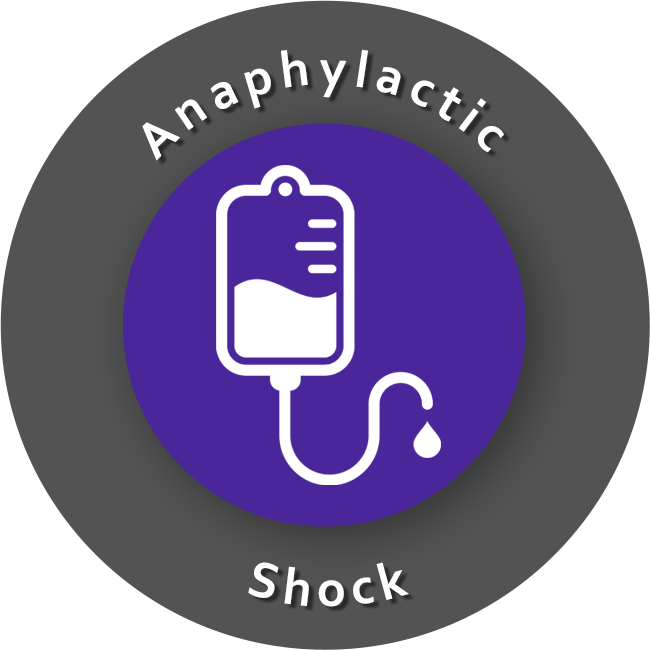
Anaphylactic Shock Overview:
Anaphylactic shock is a type of distributive shock that is caused by a massive systemic release of inflammatory mediators and cytokines that occur as a result of exposure to an allergen.
The release of these inflammatory mediators and cytokines causes systemic vein and artery dilation, increased capillary permeability, and pulmonary vasoconstriction.
This type of distributive shock results in both a relative volume loss from vasodilation and also an absolute volume loss caused by fluid seeping out through the capillary walls. The combined relative and absolute circulatory volume loss results in insufficient oxygen delivery to the tissues and organs.
There is a significant increase in right heart afterload from pulmonary vasoconstriction. This ultimately can reduce pulmonary blood flow, pulmonary venous return, and preload to the left ventricle, which all contribute to a decrease in cardiac output.
Signs and Symptoms:
The massive systemic release of inflammatory mediators and cytokines produce a number of symptoms specific to this type of distributive shock. These are angioedema, stridor or wheezing, and urticaria.
Some of the common signs are low blood pressure, tachycardia, anxiety, and agitation.
Management of Anaphylactic Shock:
The most important intervention for the treatment of anaphylactic shock is the use of IM epinephrine. Pediatric dosing for IM epinephrine, using concentration of 1:1,000, is 0.01 mg/kg intramuscular (max dose 0.5 mg). This may be repeated every 5-15 min. as needed if symptoms persist.
Epinephrine has counteractive effects on many of the symptoms of anaphylactic shock. Epinephrine reverses vasodilation by causing vasoconstriction. It reverses bronchoconstriction by causing bronchodilation. Finally, it reduces swelling and inflammation associated with anaphylaxis.
Since there is an absolute volume loss with this type of shock, fluid replacement should be used. Administration of fluid boluses of 20 ml/kg as needed are used to treat hypotension and support circulation.
Corticosteroids can be used to help reduce inflammation, and antihistamines can be used to block the detrimental systemic effects of histamine.
If anaphylactic shock does not respond to 1:1,000 IM epinephrine, 1:10,000 (1mg/10 ml) IV epinephrine can be used. IV doses can be effective even if very low (e.g. <0.05 mcg/kg per min).